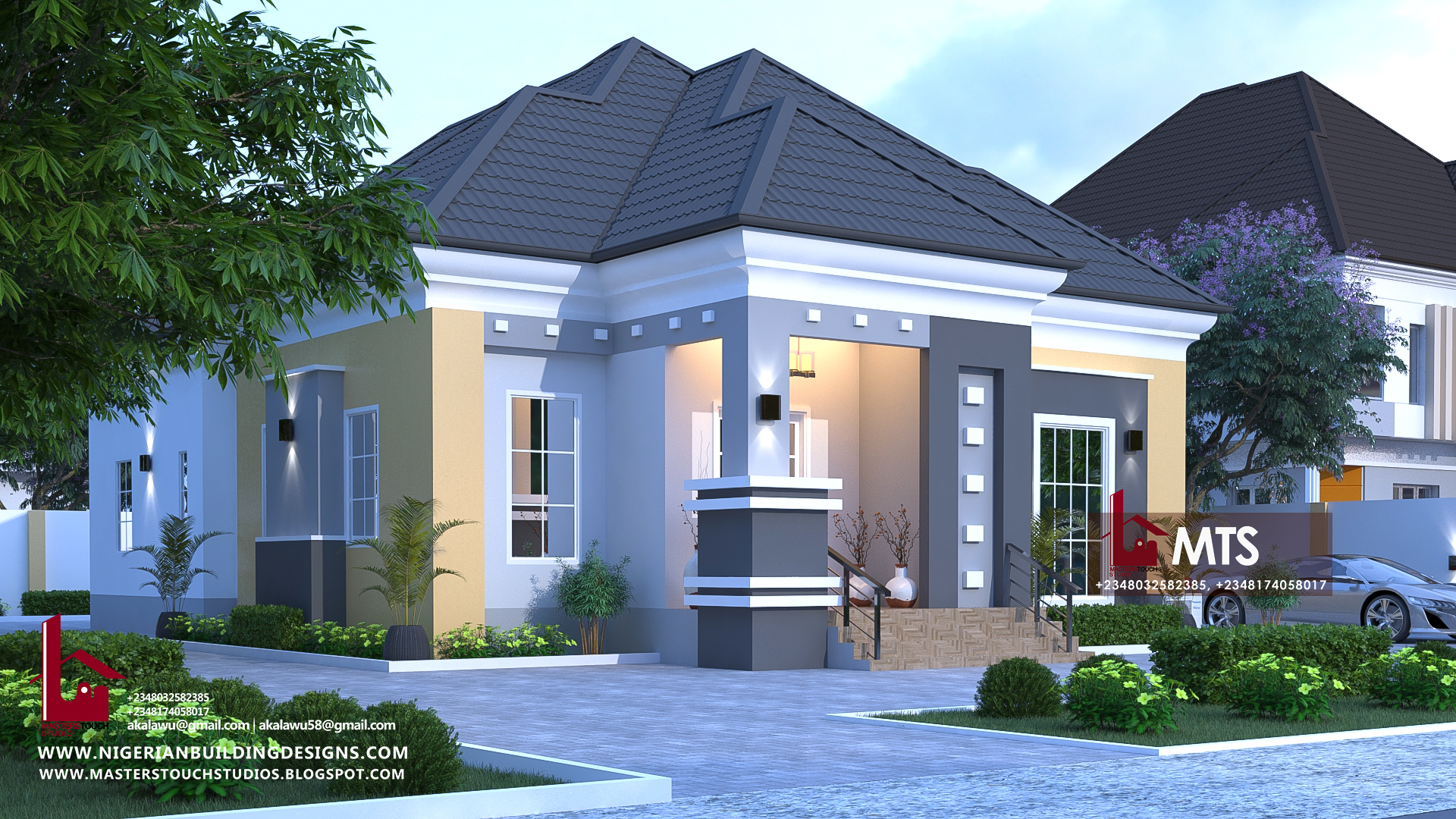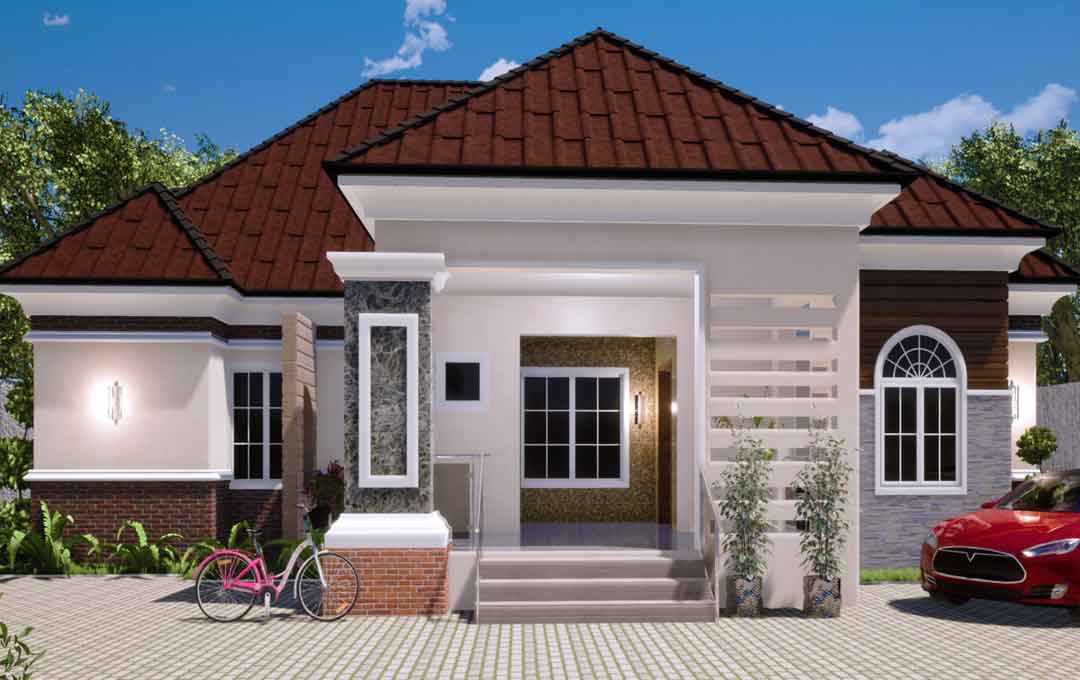Understanding the Nigerian Housing Market

The Nigerian housing market is a dynamic and complex landscape, with a growing demand for residential properties, particularly in the mid-income segment. 3-bedroom houses have emerged as a popular choice for many Nigerian families, driven by various factors, including family size, affordability, and lifestyle preferences.
Demand for 3-Bedroom Houses
The demand for 3-bedroom houses in Nigeria is fueled by the country’s expanding population and urbanization. The increasing number of families and a shift towards nuclear family structures have led to a greater need for larger homes. Moreover, the growing middle class with disposable income is seeking comfortable and spacious living spaces.
Factors Influencing Popularity
- Family Size: Nigerian families are typically large, with an average of 4-5 members. A 3-bedroom house provides adequate space for families, accommodating bedrooms for parents and children, as well as living areas for shared activities.
- Affordability: 3-bedroom houses are generally considered more affordable than larger homes, making them accessible to a wider range of income earners. The cost of construction and land acquisition for 3-bedroom houses is typically lower compared to larger properties.
- Lifestyle Preferences: Modern lifestyles in Nigeria often prioritize comfort and privacy. 3-bedroom houses offer a balance between spacious living and manageable upkeep, making them suitable for individuals and families seeking a comfortable and practical living environment.
Cost of Building a 3-Bedroom House, 3 bedroom house plans in nigeria
The cost of building a 3-bedroom house in Nigeria varies significantly across different regions, influenced by factors such as land prices, labor costs, and the availability of materials.
- Urban Centers: In major cities like Lagos, Abuja, and Port Harcourt, land prices are high, driving up construction costs. A 3-bedroom house in these areas could cost between ₦30 million and ₦50 million (approximately $75,000 – $125,000 USD) or more, depending on the location and finishes.
- Rural Areas: In less developed regions, land costs are generally lower, resulting in more affordable construction costs. A 3-bedroom house in rural areas could be built for ₦15 million to ₦25 million (approximately $37,500 – $62,500 USD) or less.
Building Materials
The choice of building materials plays a crucial role in the cost and durability of a house. Common materials used in house construction in Nigeria include:
- Concrete: Concrete is a popular choice for foundations, walls, and floors due to its strength and durability. However, it can be expensive and requires skilled labor for proper construction.
- Blocks: Concrete blocks are widely used for walls due to their affordability and ease of construction. They are typically made from cement, sand, and aggregates.
- Wood: Wood is often used for roofing, framing, and interior finishes. While wood is relatively affordable, it is susceptible to termites and requires proper maintenance.
- Iron: Iron is used for roofing, windows, and doors. It is durable and resistant to weather conditions, but can be expensive.
Essential Considerations for 3-Bedroom House Plans

Designing a 3-bedroom house in Nigeria requires careful planning to ensure optimal space utilization, functionality, and comfort. This involves understanding the needs of the occupants, the available land, and the local climate. This section will explore key considerations for creating a practical and aesthetically pleasing 3-bedroom home.
Space Optimization and Functionality
Maximizing space utilization is crucial in a 3-bedroom house. A well-designed plan considers the flow of movement between rooms, ensuring efficient use of every square foot. A common approach is to create open-plan living spaces, merging the living room, dining area, and kitchen into a single, spacious area. This creates a sense of openness and allows for flexibility in furniture arrangement.
- Open-Plan Living Areas: Combining the living room, dining area, and kitchen into one large space creates a sense of spaciousness and allows for flexible furniture arrangements. This design is particularly popular in modern homes and is ideal for maximizing natural light flow.
- Multi-Purpose Rooms: Consider incorporating multi-purpose rooms, such as a home office that can double as a guest room or a playroom that can transform into a home theater. This approach maximizes the use of space while catering to different needs.
- Built-in Storage: Incorporating built-in storage solutions, such as wardrobes, cabinets, and shelves, can significantly increase storage space while minimizing clutter. This is particularly helpful in smaller bedrooms or areas with limited floor space.
Essential Features for a Comfortable Home
A comfortable 3-bedroom home should include essential features that enhance livability and functionality. These include:
- Living Spaces: The living room should be a welcoming and comfortable space for relaxation and entertainment. Consider incorporating a spacious seating area, a TV unit, and adequate lighting.
- Bedrooms: Each bedroom should be designed for restful sleep and privacy. Adequate space for furniture, natural light, and ventilation are crucial. Master bedrooms often include an en-suite bathroom and walk-in closet for added convenience.
- Bathrooms: Bathrooms should be functional and aesthetically pleasing. Consider including a shower, toilet, and sink. A separate bathtub can be included in the master bathroom for added luxury.
- Kitchen: The kitchen is the heart of the home and should be well-equipped for cooking and dining. Essential features include ample counter space, cabinets, a sink, and a stovetop. A separate pantry or storage area can be incorporated to enhance functionality.
Importance of Natural Light and Ventilation
Natural light and ventilation are essential for creating a healthy and comfortable living environment. Well-designed windows and skylights allow ample sunlight to penetrate the house, reducing the need for artificial lighting and promoting a sense of spaciousness.
- Strategic Window Placement: Windows should be strategically placed to maximize natural light and ventilation. Consider incorporating large windows in living areas and bedrooms to allow for cross-ventilation.
- Skylights: Skylights can be a great way to bring natural light into rooms with limited window space, such as hallways or bathrooms. They can also create a sense of openness and connection to the outdoors.
- Ventilation Systems: Incorporate ventilation systems, such as exhaust fans in bathrooms and kitchens, to remove moisture and odors, creating a healthier indoor environment.
Landscaping and Outdoor Spaces
Landscaping and outdoor spaces play a crucial role in enhancing the overall appeal and livability of a 3-bedroom house. A well-designed landscape can create a sense of privacy, add visual interest, and provide a comfortable outdoor living space.
- Gardens: A well-maintained garden can add beauty and tranquility to the property. Consider incorporating a variety of plants, flowers, and trees to create visual interest and provide shade.
- Patios and Decks: Patios and decks provide outdoor living spaces for relaxation, dining, or entertaining. Consider incorporating comfortable seating, a dining table, and a barbecue grill.
- Swimming Pools: If space permits, a swimming pool can be a luxurious addition to a 3-bedroom house. It can provide a place for recreation and relaxation.
Popular 3-Bedroom House Plan Styles in Nigeria: 3 Bedroom House Plans In Nigeria

Nigeria’s diverse cultural heritage and evolving architectural landscape have resulted in a wide array of popular 3-bedroom house plan styles. Understanding these styles is crucial for homeowners seeking to build a dwelling that reflects their preferences and lifestyle. This section explores the most prevalent 3-bedroom house plan styles in Nigeria, highlighting their unique characteristics, advantages, and disadvantages.
Popular 3-Bedroom House Plan Styles in Nigeria
This section presents a comprehensive overview of popular 3-bedroom house plan styles in Nigeria. Each style is characterized by its distinctive architectural features, functional considerations, and aesthetic appeal. Understanding these styles will empower homeowners to choose the plan that best suits their needs and preferences.
| Style | Key Characteristics | Advantages | Disadvantages |
|---|---|---|---|
| Traditional Nigerian | – Use of local materials such as mud bricks, thatch, and wood – Emphasis on open-air spaces and courtyards – Incorporates traditional architectural elements like verandahs, balconies, and intricate carvings |
– Cost-effective – Sustainable and environmentally friendly – Provides a sense of connection to Nigerian heritage |
– Limited space – May not be suitable for modern lifestyles – Requires regular maintenance |
| Modern Contemporary | – Clean lines and minimalist design – Use of glass, steel, and concrete – Open floor plans and large windows |
– Spacious and airy – Offers a modern aesthetic – Adaptable to different lifestyles |
– High construction costs – May not be suitable for hot climates – Requires regular maintenance |
| Mediterranean | – Whitewashed walls – Terracotta roofs – Arched doorways and windows – Lush landscaping |
– Elegant and inviting – Provides a sense of warmth and comfort – Adaptable to different climates |
– Can be expensive to build – Requires regular maintenance – May not be suitable for all environments |
| Colonial | – Symmetrical design – High ceilings – Large windows – Use of brick or stone |
– Timeless and elegant – Offers a sense of grandeur – Provides ample natural light |
– Can be expensive to build – Requires regular maintenance – May not be suitable for all climates |
Incorporating Traditional Nigerian Architectural Elements
Homeowners often seek to infuse their contemporary homes with traditional Nigerian architectural elements, creating a unique blend of modern and heritage aesthetics. These elements can be subtly incorporated into various aspects of the house plan, enhancing its visual appeal and cultural significance.
Examples of traditional Nigerian architectural elements that can be integrated into modern 3-bedroom house plans include:
- Verandahs: These covered porches provide a shaded outdoor space for relaxation and social gatherings, a common feature in traditional Nigerian homes.
- Balconies: Elevated platforms overlooking the surrounding landscape, balconies offer panoramic views and a sense of privacy, often adorned with intricate carvings.
- Courtyards: Open-air spaces enclosed by the house, courtyards create a serene and inviting atmosphere, providing a connection to nature and traditional Nigerian living.
- Intricate Carvings: Traditional Nigerian art is renowned for its intricate carvings, which can be incorporated into various elements of the house plan, such as doors, windows, and beams.
Latest Trends in Contemporary 3-Bedroom House Designs in Nigeria
Contemporary 3-bedroom house designs in Nigeria are characterized by a fusion of modern aesthetics and functional considerations, reflecting the evolving needs and preferences of homeowners. These trends incorporate innovative materials, sustainable practices, and a focus on maximizing space and natural light.
Key trends in contemporary 3-bedroom house designs include:
- Open Floor Plans: Seamless transitions between living spaces create a sense of spaciousness and encourage interaction.
- Sustainable Features: Incorporating solar panels, rainwater harvesting systems, and energy-efficient appliances promotes environmental consciousness.
- Smart Home Technology: Integrating smart home devices enhances convenience, security, and energy efficiency.
- Minimalist Design: Clean lines, neutral colors, and a focus on functionality create a modern and uncluttered aesthetic.
3 bedroom house plans in nigeria – Designing a 3-bedroom house in Nigeria requires careful planning, considering factors like ventilation, space utilization, and, of course, the aesthetics. While focusing on the larger picture, don’t forget the details! A well-organized bathroom adds a touch of elegance, and learning simple techniques like how to fold bathroom hand towels can make a world of difference.
This seemingly small act adds a sense of order and cleanliness, contributing to the overall impression of your carefully designed 3-bedroom home.
Designing a three-bedroom house in Nigeria often involves considering local building materials and cultural preferences. For a different perspective, you might be interested in exploring the options for 3 bedroom apartments in Blackwood NJ , where a different set of architectural influences come into play.
However, whether in Nigeria or New Jersey, the goal remains the same: creating a comfortable and functional space for a growing family.